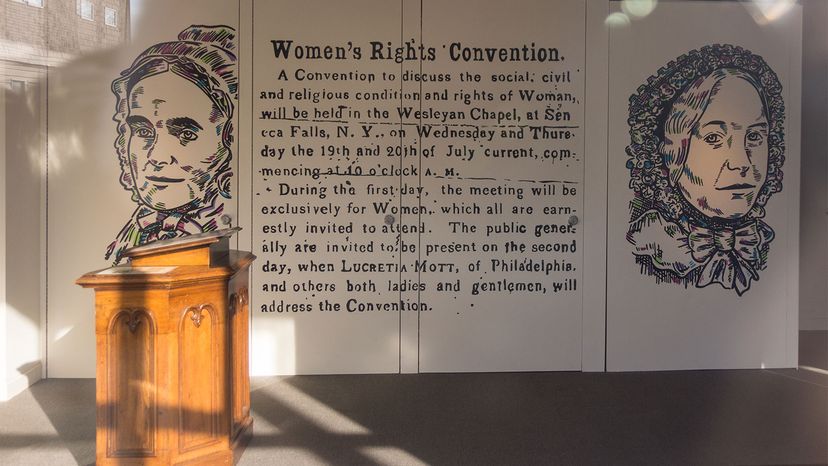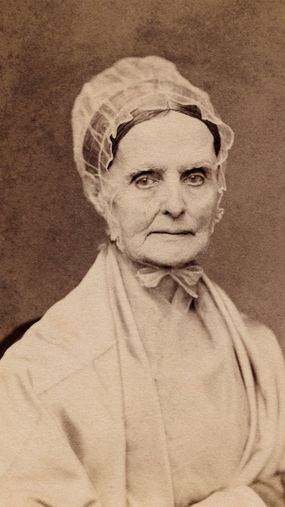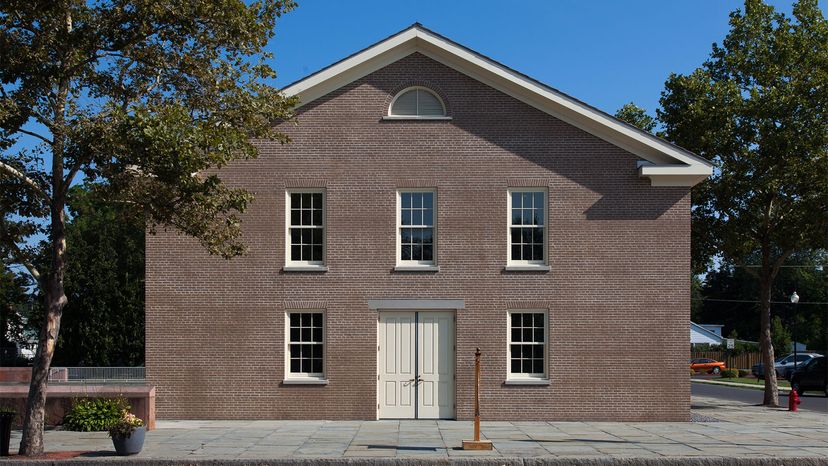
Advertisement

Advertisement
In July 1848, a remarkable event took place in the town of Seneca Falls, New York. It was a women's rights convention — the first ever held in the United States. More than 200 women attended the event initially organized by five women — Lucretia Mott, Elizabeth Cady Stanton, Martha Wright, Mary Ann M'Clintock and Jane Hunt — friends and comrades in the abolitionist movement. They hoped, but had no way of knowing, that their event, eventually known as the Seneca Falls Convention, would become the starting point for the women's rights movement in the U.S.
So, who were these women and why did they meet in Seneca Falls? Why not New York City, Philadelphia or Washington, D.C.? We talked to Janine Waller, chief of interpretation, education and outreach at Women's Rights National Historical Park in Seneca Falls.
Advertisement
"Their connections were all familial and religious," Waller says. "And it's really because of the Quaker involvement that they were involved in the abolition movement."
The "first five" as the five friends were later called, were connected through the Quaker Society of Friends in Philadelphia. Lucretia Mott was a Quaker minister and one of the founders of the Philadelphia Female Anti-Slavery Society. She was a charismatic speaker and, at the time, one of the most well-known women in America. Mott met Elizabeth Cady Stanton, another ardent abolitionist (though not a Quaker), at the 1840 World Anti-Slavery Convention in London where she and her husband Henry Brewster Stanton, were honeymooning. Stanton's husband, a professional abolitionist speaker, was invited to speak at the conference but when the two women were blocked from participating fully in the convention, they turned their righteous anger into making plans to hold a women's rights convention in the U.S.
Advertisement

It was eight years before they met up again. By that time, the Stantons lived in Seneca Falls and Mott was invited to speak in the area. Mott's sister, Martha Wright, also lived in nearby Auburn. The M'Clintocks were renting a house and property from the Hunts in Waterloo, New York. The five women met together at the Hunt home in Waterloo and decided to organize the women's rights convention while Mott was still in the area.
"The five planners were well-schooled in activism from the abolition movement," Waller says. "It's where they learned about petitioning, conventions and professional speaking. It's where they learned the tools of activism."
Those tools came in handy as they had only 10 days, from the time they decided to hold the convention, until the convention itself — July 19 and 20 at the Wesleyan Chapel in Seneca Falls. Fortunately, they were women with networks — notably their abolition and Quaker networks.
Advertisement
They also publicized the convention July 11th in the local newspaper, the Seneca County Courier, and in The North Star, a newspaper published by abolitionist, orator, writer and activist, Frederick Douglass. Douglass also was personally invited to the convention by M'Clintock. He accepted and was the only Black man and person of color recorded at the event. When July 19 rolled around, an estimated 300 women and men (mostly from the central New York region) were in attendance.
The first day of the convention was limited to women only and began with a stirring address from Stanton, setting the stage for what was to come:
Advertisement

Advertisement
The five womens-rights activists presented the Declaration of Sentiments, which Stanton co-authored. The document was modeled on the Declaration of Independence and laid out the women's objections on subjects including women's suffrage, access to education, domestic violence, equal pay and equal justice in the courts including in inheritance and custody disputes. Though women's suffrage was an essential item on the agenda, it nearly broke the convention and Waller says the reasons were as diverse as the people debating them.
"Many folks felt that politics was unseemly for women who were viewed as the moral compass of the family," she says. "Participating in politics would sully them. Others felt women were not intellectually prepared to vote. They would just vote for whomever their husbands told them to. Still others thought that it just wasn't that important. They thought it was more critical to address issues of domestic violence, equal pay and family court and law; these were more immediate concerns. It was Frederick Douglass who supported Elizabeth Cady Stanton in her insistence that all these other things could not be changed without political and legislative power and that's what the right to vote would bring."
Advertisement
The Declaration of Sentiments was far more than a laundry list of grievances.
"It includes a list of resolutions, the things they resolve to do, and it's very explicitly laid out," Waller says. "It's very specific, visionary and unequivocal. Women and men should be equal. Full stop. They are equal. Full stop. [These sentiments] come out of the abolition movement and people asking what is the difference between one person and another, and what kind of power do they have to make changes in their own lives and society at large."
Advertisement
The Declaration of Sentiments was signed July 20, 1848 by 68 women and 32 men. The women signed the Declaration under the heading "Firmly relying upon the final triumph of the Right and the True, we do this day affix our signatures to this declaration," while the men signed under the heading, "... the gentlemen present in favor of this new movement."

Advertisement
The new movement, the women's movement, was put on hold during the Civil War and immediately after due to Reconstruction. But Waller says a gradual opening up of society, including tangible gains in the legal system on behalf of women occurred in state houses even before 1920 when the 19th Amendment guaranteeing women's right to vote was finally ratified.
Advertisement
But the lasting legacy of the Seneca Falls Convention remains more than any one amendment or issue will ever contain.
"At some point these five women made a decision to do something different — they made a decision to take their concerns public," she says. "They seized the opportunity in front of them and that's something we all can do. That legacy of empowerment is what normal people can do when they get together and share things openly. They change the world."
Advertisement
Please copy/paste the following text to properly cite this HowStuffWorks.com article:
Advertisement